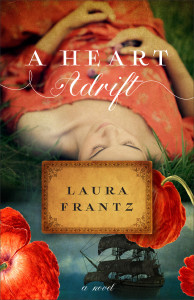
It is 1755, and the threat of war with France looms over colonial York, Virginia. Chocolatier Esmée Shaw is fighting her own battle of the heart. Having reached her twenty-eighth birthday, she is reconciled to life alone after a decade-old failed love affair from which she’s never quite recovered. But she longs to find something worthwhile to do with her life.
Captain Henri Lennox has returned to port after a lengthy absence, intent on completing the lighthouse in the dangerous Chesapeake Bay, a dream he once shared with Esmée. But when the colonial government asks him to lead a secret naval expedition against the French, his future is plunged into uncertainty.
Can Esmee and Henri’s shared vision and dedication to the colonial cause heal the wounds of the past and reunite them?

Laura Frantz’s A HEART ADRIFT just released in the midst of winter storms. Though the winds shook our windows and rain battered our roof, I spent the day relaxing into a warm Virginia breeze and Esmée Shaw’s life in colonial, coastal Virginia. And like the kite in the opening scene, I was tugged constantly onward from the first page.
As a single woman in colonial Virginia, Esmée Shaw’s options are limited, and even ten years after her love left her behind for the sea, her heart hasn’t healed; and she wants to do something meaningful with her life. Until she figures that out, she takes comfort burying herself in the work of Shaw’s Chocolate shop. But when she hears talk of Captain Henri Lennox’s possible return after years at sea, her heart, mind, and spirit are aflutter.
Frantz’s characters are as clear and real as my next-door neighbors. She gives succinct yet strong hints of their desires, values, etc, such as when Esmée’s father observes, “You were in love once.” Frantz reveals how this seemingly mild observation impacts Esmée: “His low words rolled across the empty shop like a rogue wave, swamping and nearly upending her.”

Molinillo – to whisk chocolate drinks.
Frantz creates varied and interesting situations for her characters to display their struggles, feelings, secrets … And while colonial era standards limit choices for women, a rich interior life that Frantz shares with readers provides a wide landscape to learn about them. An example is when a customer specifically asks for Esmée to wait on her rather than “the help.”
“The widow was fond of reminding Esmée she was not among York’s founding families but an outsider, an easterner. Still Esmée tried to be cordial.”
Another example when Esmée and her father discuss the possible war and secret meetings he has with the governor. Esmée questions and probes but cannot find out how Capt. Lennox is involved. “The coach lurched to a stop…. Feeling like a kettle left too long at the fire, Esmée gathered her hat and gloves….Would she ever have answers?”
Esmée Shaw is a noble character with nary a bad word to say about anyone as she straddles the classes in colonial Virginia, This highlights another of Frantz’s skills. I appreciate how she imbues characters from all classes, politics, races with dignity. ‘Tis a rare skill that accurately shows how some characters are looked down upon and treated meanly in a particular era, yet infuses them with the dignity and value they have in God’s eyes. Frantz always accomplishes this subtly, such that it doesn’t even register. It slips between the lines of text like a gentle wave rolling over the sand, barely visible until I stop, look back, and analyze. When you read this story, observe the behavior of girls from the almshouse, a rejected suitor, a “black jack,” and of course those Esmée loves.
Readers can rely on Frantz to create an historic story world that is so accurate and vivid in detail that it comes alive. One thing I especially admire: Frantz excels at creating a plot anchored in the colonial setting that reveals exactly how precarious life in that era was. Readers could easily view dangers through a 21st century veil of risk mitigated by a governmental or cultural safety net, through expectations we have in a constitutional democracy. But life in Colonial times had no such reliable buffers. Frantz displays great skill in showing that her characters live on a razor’s edge.

Alliance
by Pamela Patrick White
“Just shy of his sixteenth birthday, he’d been working late in his father’s dockyard when a press-gang overtook him, the certificate of exemption he carried in his pocket of no consequence … the gang pummeled him ,,, tore up his paper, then took him aboard the HMS Victory. Fueled by fury as well as ambition, he’d worked his way up from cabin boy to midshipman to officer till he’d used the Royal Navy to gain his own vessel and his own captaincy.”
Everything about this tale of love lost, love gained, self-sacrifice, faith, and heroism fits together like an intricate jig-saw puzzle. It flows rich and lustrous like the smooth, aromatic chocolate Esmée works on her marble chocolate stone. I highly recommend this to readers who enjoy historical and inspirational romantic fiction.
(Thank you to Baker Publishing Group for a copy of the book. I was not required to write a positive review in return.)

Great Point Light on Nantucket Island, Massachusetts
If Laura Frantz is a new author to you, you can learn more on her website or visiting on Instagram, Pinterest, or Facebook.

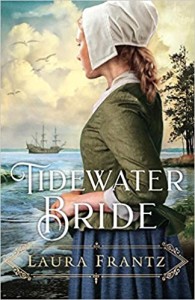
 TIDEWATER BRIDE by Laura Frantz is a pearl of a story, touching on themes of love, sacrifice, cross-cultural understanding and respect, and reconciliation.
TIDEWATER BRIDE by Laura Frantz is a pearl of a story, touching on themes of love, sacrifice, cross-cultural understanding and respect, and reconciliation.
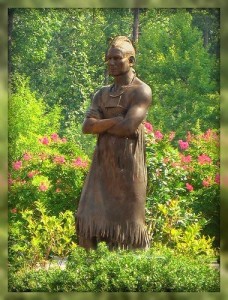
 And as always, Frantz has a perfect way of drawing children with their unique viewpoints, sparkling with spontaneity, delight, and generosity, and sharing the joy and distraction of a new puppy.
And as always, Frantz has a perfect way of drawing children with their unique viewpoints, sparkling with spontaneity, delight, and generosity, and sharing the joy and distraction of a new puppy.
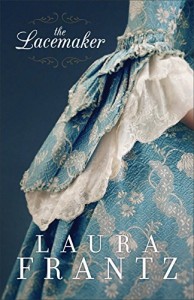 Laura Frantz’s THE LACEMAKER is set in 1775, pot-boiling days leading up to The Revolutionary War, when allegiances were strained and loyalties shifting. And Williamsburg, Virginia seems at the center of it all.
Laura Frantz’s THE LACEMAKER is set in 1775, pot-boiling days leading up to The Revolutionary War, when allegiances were strained and loyalties shifting. And Williamsburg, Virginia seems at the center of it all. This is one of Frantz’s most overt romances and it works very well. The object of Elisabeth’s affections, the master of Ty Mawr estate and Independence Man Noble Rynallt, is a hero beyond expectation! The barriers to any relationship for these two are huge. When they seem insurmountable, I expected to leave the story with only bittersweet memories and the echo of Anwylyd. But noble sacrifices, exactly what one expects from a larger-than-life hero, emerge out of nowhere and bring sighs and hope and, as Frantz always promises ~ hints of HEA (happily-ever-after).
This is one of Frantz’s most overt romances and it works very well. The object of Elisabeth’s affections, the master of Ty Mawr estate and Independence Man Noble Rynallt, is a hero beyond expectation! The barriers to any relationship for these two are huge. When they seem insurmountable, I expected to leave the story with only bittersweet memories and the echo of Anwylyd. But noble sacrifices, exactly what one expects from a larger-than-life hero, emerge out of nowhere and bring sighs and hope and, as Frantz always promises ~ hints of HEA (happily-ever-after).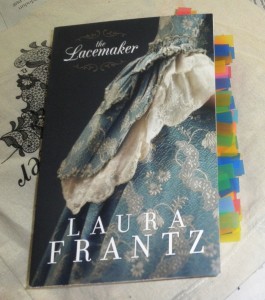 Oh, Elisabeth, I want to hug you and walk you to a place of respite. Dear reader, don’t you?
Oh, Elisabeth, I want to hug you and walk you to a place of respite. Dear reader, don’t you?